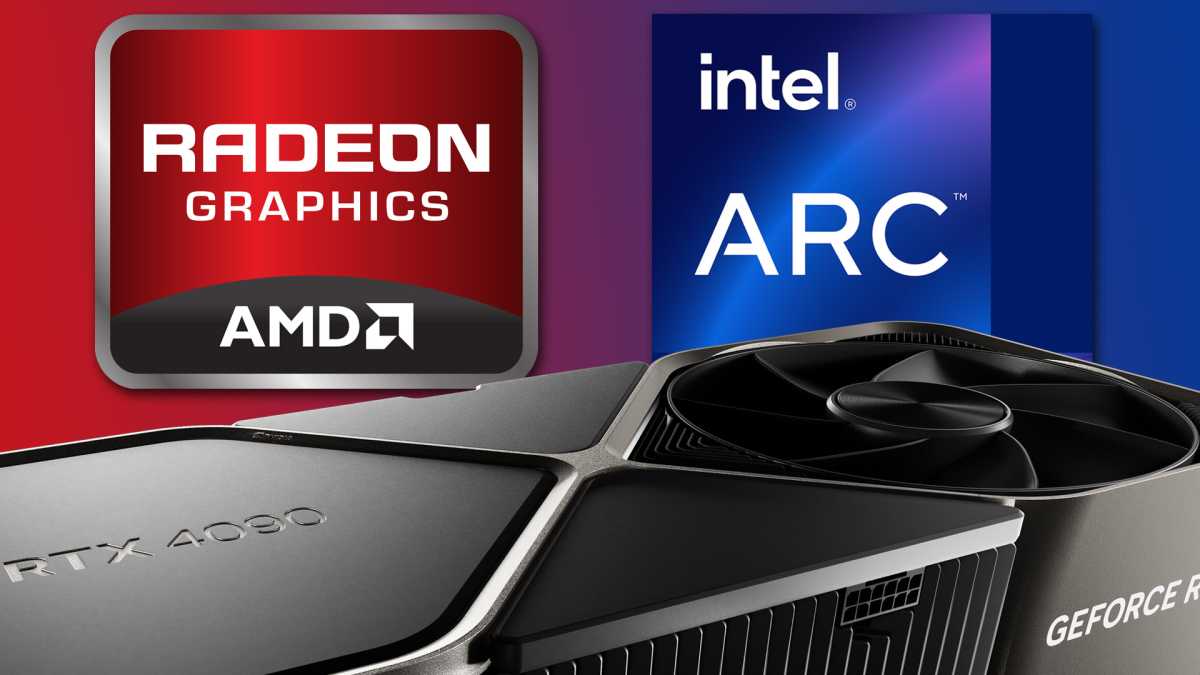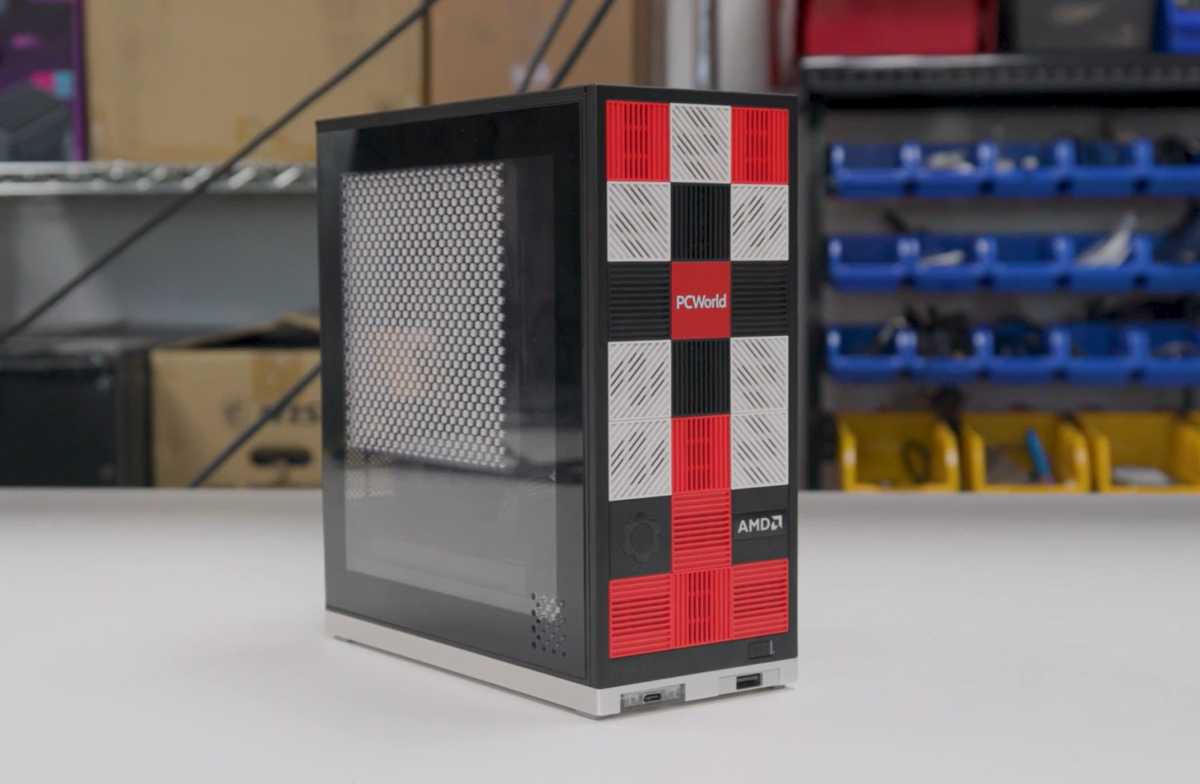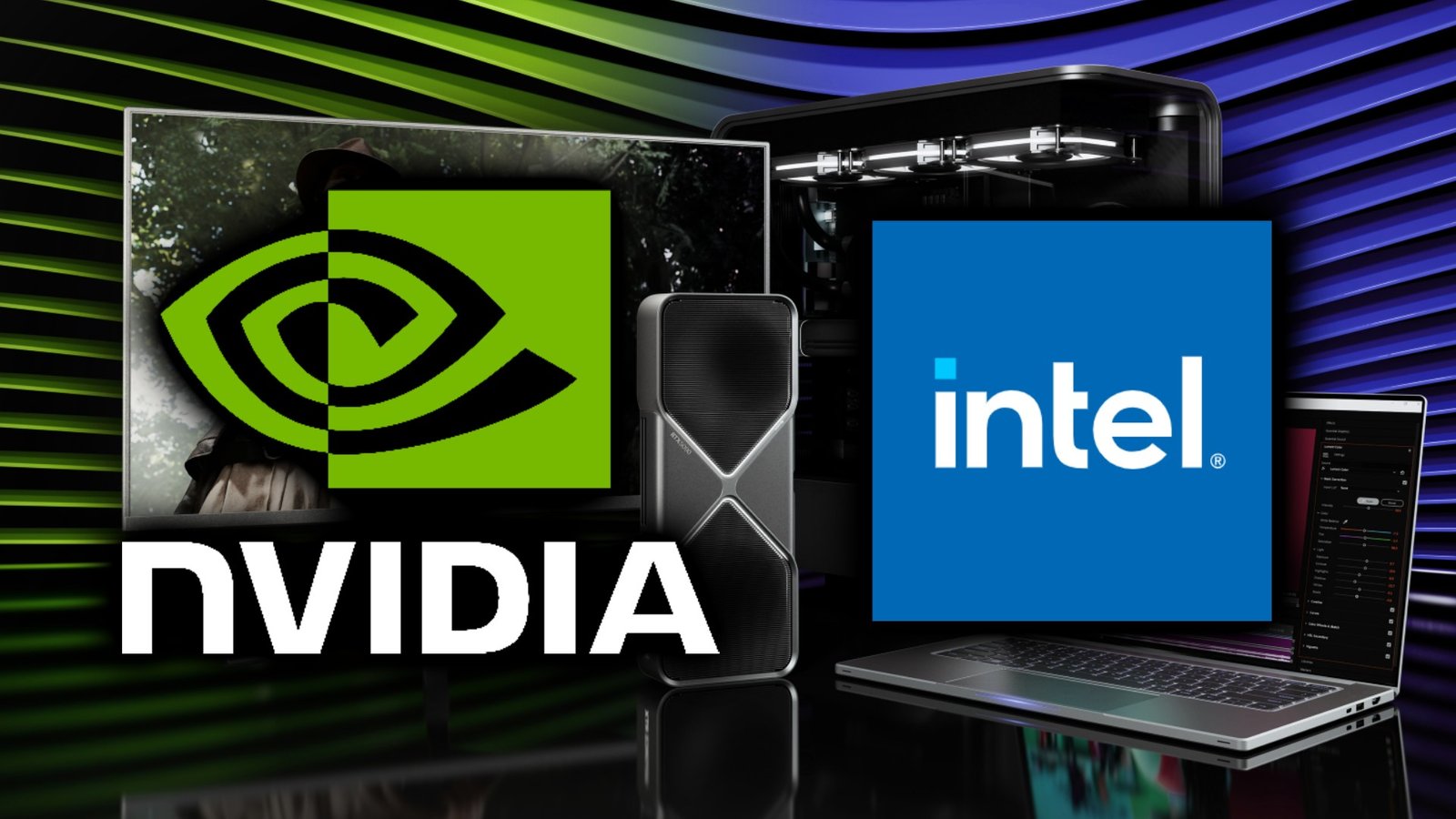If you told me 25 years ago that Intel would end up in decline, that Nvidia would buy a chunk of the ailing company, and that the two would partner to build chips that integrate Intel x86 CPU cores with Nvidia’s RTX GPU cores, I would’ve called you crazy. But here we are.
Nvidia has acquired a $5 billion stake in Intel—roughly 5 percent of the company. “For personal computing, we’re going to create new Intel x86 SoCs that integrate Nvidia GPU chiplets, fusing the world’s best CPU and GPU, to redefine the PC experience,” Nvidia CEO Jensen Huang said on an investor call following the announcement.
The announcement made headlines and for good reason. This alliance will create a monster that Intel and Nvidia’s competitors—namely, AMD and Qualcomm—will struggle to defeat.
A chip alliance that can’t be beat
The development of a chip that fuses Intel x86 cores with Nvidia RTX graphics will be a huge deal for all the obvious reasons.
Nvidia rules PC graphics with an iron fist, but currently lacks an integrated graphics play. That’s created a few safe spaces—like portable gaming laptops and gaming handhelds like the Steam Deck—where Nvidia’s advantages are irrelevant.
It also provides an even playing field between Intel and AMD CPUs in high-end laptops, where said CPUs are paired with Nvidia’s discrete graphics. A laptop maker’s choice between an Intel and AMD CPU is mostly about the performance and power draw of each, not how tightly the CPU integrates with Nvidia’s GPU.
An Intel-Nvidia chip obliterates that balance.

Nvidia, AMD, Intel
Suddenly, Nvidia integrated graphics in portable PCs looks entirely plausible. A tight integration between Intel x86 cores and Nvidia RTX graphics will provide efficiencies in SoC design, power draw, and feature set that AMD and Qualcomm simply can’t match.
And it’s no better in high-end laptops. An Intel-Nvidia alliance will make it easy for Intel to convince laptop makers they should pick Intel. They’re all going to use Nvidia GPUs anyway, so why choose to build a laptop around an AMD SoC with Nvidia discrete graphics if they could instead build around a complete Intel-Nvidia SoC?
Qualcomm is even worse off. The company doesn’t offer discrete graphics support at this time, and its integrated graphics solutions are far behind the curve. The company was already playing catch-up in the graphics race, and an Intel-Nvidia chip alliance now moves the finish line several miles further away.
Is this the start of a new duopoly?
The threat of an Intel-Nvidia alliance is so severe that it raises questions about how regulators will view them if they’re successful at market.
As the latest Steam Hardware Survey shows, Nvidia’s dominance in both laptop and desktop graphics is close to absolute. (I personally find this a bit odd, as I’ve put my money on AMD the last few times I needed a new GPU. But apparently I’m in the minority.) As it stands, Nvidia’s PC video card market share sits at a massive 74.88 percent.
And Nvidia’s lead is arguably even greater than that figure suggests because most of the non-Nvidia market share stems from Intel and AMD integrated graphics. AMD’s most popular discrete graphics product—the RX 6600—is the 30th most common GPU in the survey. That puts it behind ancient Nvidia GPUs like the GTX 1050 Ti and RTX 2060.

Joel Lee / Foundry
Intel’s command of the CPU market is less absolute, with a roughly 60-40 split in favor of Intel over AMD. The data also shows that AMD’s CPU share leans towards high-end parts with a clock speed of 3GHz or better, while Intel’s CPUs appear to be a mix of low, mid, and high-end options.
But Steam actually skews the results in AMD’s favor, as the company’s consumer CPUs are particularly excellent for gaming. Other non-gaming data sources show that AMD’s consumer CPU market share is still under 25 percent. That’s largely due to laptops and low-end desktops, where Intel CPUs remain the most common choice.
These figures paint a grim picture for competition in the consumer PC arena. An Intel-Nvidia alliance pairs the consumer CPU market leader with the consumer GPU market leader—and the result is a monster that eats up whatever gains we’ve seen in hardware competition recently.
Further reading: Intel Arc graphics face a murky future after Nvidia’s $5B RTX mashup
Say bye to desktop graphics as we know it
I suspect this alliance could herald long-anticipated changes in the PC hardware world, and one of the biggest changes wrought by Intel-Nvidia GPUs will be the death of discrete graphics as we know it.
Here’s the issue: discrete graphics kinda suck. They duplicate silicon, including memory, that could be more tightly integrated. They make it difficult—even impossible—to pass workloads from CPU to GPU, forcing these powerful components to function in silos. They’re inefficient.
An integrated approach—with all memory shared across the CPU, GPU, and NPU—is superior. It cuts down on duplication of memory resources, as well as the shared silicon on each chip, and significantly reduces latency when moving tasks across each. This is exactly the advantage of Apple’s in-house silicon and AMD’s Ryzen AI Max.

Alex Esteves / Foundry
The efficiencies provided by an integrated GPU were traditionally most important in mobile, where space and power are at a premium. But recent GPUs have shown these issues are relevant to desktops, too. Desktop GPUs are physically massive and draw so much power that they can melt power connectors. Yet they also, due to cost constraints, have relatively slim pools of memory, with even top consumer models limited to a measly 32GB of VRAM and most stuck at 16GB or less.
While I expect that Intel and Nvidia will focus first on laptop chips, which represent the bulk of the PC market, the same advantages also apply to the desktop. I think the future of the desktop PC will look a lot like the Framework Desktop, which is built around AMD’s Ryzen AI Max—but instead of that, we’re looking at Intel-Nvidia SoCs. That means you could kiss upgradeable discrete desktop graphics goodbye.
Okay, then. What’s the good news?
I don’t think it’s possible to overstate the potential upheaval that will come from this Intel-Nvidia alliance, and it might sound like bad news for competition in the PC market. Still, there are a few reasons to hope that it will work out for the better.
Maybe Nvidia will drag its feet and the number of Intel-Nvidia chips that come to market will be few. I don’t think this will happen, as Huang says Nvidia will “be quite a large supplier of GPU chiplets into Intel x86 SoCs.” And ailing Intel has plenty of incentive to turn those chiplets into products quickly. But company politics, like all politics, are messy… so there’s always the possibility that one or both partners will falter in their alliance.

Gordon Mah Ung / Foundry
Any delay could give AMD the chance to strike back. I’m sure AMD will respond to the Intel-Nvidia alliance by reminding everyone that AMD’s Ryzen AI Max has similar advantages as a potential Intel-Nvidia SoC, and it’s available right now. However, Ryzen AI Max’s availability is currently limited to just a handful of end-user PCs. The threat of an Intel-Nvidia SoC could force AMD to accelerate its plans to broaden its reach.
I also think that, in the short term, this is an obvious win for PC buyers and enthusiasts. Intel-Nvidia SoCs are likely to be hits in both performance and battery life, and they’ll probably be competitive on price without the need to replicate costly memory across CPU and GPU. The resulting laptops and desktops could deliver better bang for your buck than any PC SoC to date. Dominant Intel-Nvidia SoCs might cause problems if they crowd out competition, but that’s years down the road.
No matter how you slice it, it’s clear that this announcement is a big deal for consumer PCs. It’s also clear that when the planned Intel-Nvidia SoCs come to market, the PC is likely to be forever changed.
Further reading: Intel’s deal with Nvidia could utterly rewrite the future of laptops
This articles is written by : Nermeen Nabil Khear Abdelmalak
All rights reserved to : USAGOLDMIES . www.usagoldmines.com
You can Enjoy surfing our website categories and read more content in many fields you may like .
Why USAGoldMines ?
USAGoldMines is a comprehensive website offering the latest in financial, crypto, and technical news. With specialized sections for each category, it provides readers with up-to-date market insights, investment trends, and technological advancements, making it a valuable resource for investors and enthusiasts in the fast-paced financial world.
